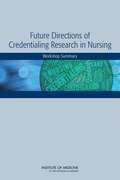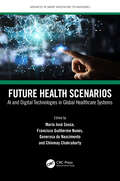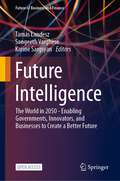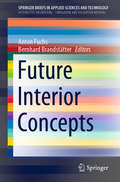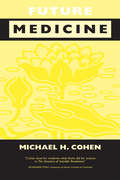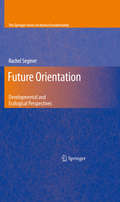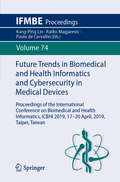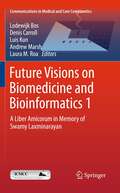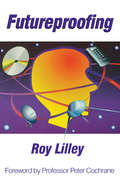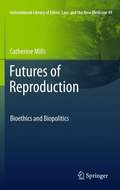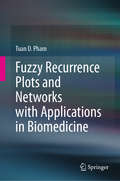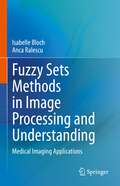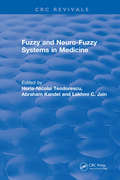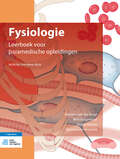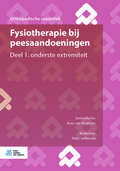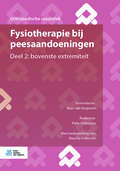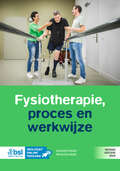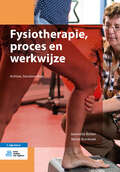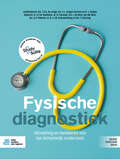- Table View
- List View
Future Directions of Credentialing Research in Nursing: Workshop Summary
by Margaret A. MccoyThe nurse workforce constitutes the largest sector of health professionals in the United States and includes individuals with varying educational backgrounds and expertise. Like other health professions, nursing includes a large number of specialties and subspecialties. Nurses may seek certification, based on various standards and criteria, from a wide range of organizations. Similarly, organizations may participate in nursing credentialing programs, which typically reflect the attainment of various nursing care standards and outcome measures. It is, however, unclear how this additional training and education affects health care quality and patient health. "Future Directions of Credentialing Research in Nursing" examines short- and long-term strategies to advance research on nurse certification and organizational credentialing. This report summarizes a workshop convened by the Institute of Medicine in September 2014 to examine a new framework and research priorities to guide future research on the impact of nurse credentialing and certification on outcomes for nurses, organizations, and patients. Over 100 people attended the workshop, which focused on topics such as emergent priorities for research in nursing credentialing; critical knowledge gaps and methodological limitations in the field; promising developments in research methodologies, health metrics, and data infrastructures to better evaluate the impact of nursing credentialing; and short- and long-term strategies to encourage continued activity in nursing credentialing research. "Future Directions of Credentialing Research in Nursing" is a record of the presentations, discussion, and break-out sessions of this event.
Future Forsaken: Abuses Against Children Affected by HIV/AIDS in India
by Human Rights WatchThis 209-page report documents how many doctors refuse to treat or even touch HIV-positive children. Some schools expel or segregate children because they or their parents are HIV-positive. Many orphanages and other residential institutions reject HIV-positive children or deny that they house them. Children from families affected by AIDS may be denied an education, pushed onto the street, forced into the worst forms of child labor, or otherwise exploited, all of which puts them at greater risk of contracting HIV.
Future Health Scenarios: AI and Digital Technologies in Global Healthcare Systems (Advances in Smart Healthcare Technologies)
by Chinmay Chakraborty Maria José Sousa Francisco Guilherme Nunes Generosa Do NascimentoDigital technologies is a major emerging area to invest and research in new models of health management. Future health scenarios are constituted by technologies in health and clinical decision-making systems. This book provides a unique multidisciplinary approach for exploring the potential contribution of AI and digital technologies in enabling global healthcare systems to respond to urgent twenty-first-century challenges. Deep analysis has been made regarding telemedicine using big data, deep learning, robotics, mobile and remote applications. Features: Focuses on prospective scenarios in health to predict possible futures. Addresses the urgent needs of the key population, socio-technical and health themes. Covers health innovative practices as 3D models for surgeries, big data to treat rare diseases, and AI robot for heart treatments. Explores telemedicine using big data, deep learning, robotics, mobile and remote applications. Reviews public health based on predictive analytics and disease trends. This book is aimed at researchers, professionals, and graduate students in computer science, artificial intelligence, decision support, healthcare technology management, biomedical engineering, and robotics.
Future Intelligence: The World in 2050 - Enabling Governments, Innovators, and Businesses to Create a Better Future (Future of Business and Finance)
by Karine Sargsyan Tamás Landesz Sangeeth VargheseThe first quarter of the 21st century introduced the world to rapid uncertainty, be it the social-political and financial crises, or pandemics, or the shaking up of well-established democracies with an increasing rise in populism. At the same time, the technological promise has taken off with automation, artificial intelligence, and nanotechnologies increasingly becoming an economic reality. This open-access book brings together experts of specific domains, through the windows of their experience, and in a crowdsourced fashion, to analyze these world developments to develop an overall view, a compelling case of what we should be prepared for, as we march towards 2050. Topics covered include the future of leadership, the future of solving global challenges, and designing a way of life in harmony with nature. Other topics include disruptive entrepreneurship, the relevance of geographical borders, game-changing future innovations, education, and networked learning, interplanetary travel, and communication. The book also places an importance on the role of empathy, mindfulness, presence, and sharing becoming the anchors for future decision-making by 2050. Of general interest to anyone eager to understand the future of the world, this book is particularly useful for planners, policymakers, strategists and entrepreneurs.
Future Interior Concepts (SpringerBriefs in Applied Sciences and Technology)
by Anton Fuchs Bernhard BrandstätterIn this book, the authors highlight multiple aspects of and views on comprehensive automotive interior comfort for future mobility. In this context, passenger comfort comprises thermal, acoustic, seat perception, as well as human–machine interaction in the passenger cabin. In five chapters, the contributing authors, hailing from universities, research centers and industry, share their expertise and insights. They take a closer look at future interior concepts from the standpoints of fundamental and applied research, as well as practical aspects.
Future Medicine: Ethical Dilemmas, Regulatory Challenges, and Therapeutic Pathways to Health Care and Healing in Human Transformation
by Michael H. CohenFuture Medicineis an investigation into the clinical, legal, ethical, and regulatory changes occurring in our health care system as a result of the developing field of Complimentary and Alternative Medicine (CAM). Here Michael H. Cohen describes the likely evolution of the legal system and the health care system at the crossroads of developments in the way human beings care for body, mind, emotions, environment, and soul. Through the use of fascinating and relevant case studies, Cohen presents stimulating questions that will challenge academics, intellectuals, and all those interested in the future of health care. In concise, evocative strokes, the book lays the foundation for a novel synthesis of ideas from such diverse disciplines as transpersonal psychology, political philosophy, and bioethics. Providing an exploration of regulatory conundrums faced by many healing professionals, Cohen articulates the value of expanding our concept of health care regulation to consider not only goals of fraud control and quality assurance, but also health care freedom, integration of global medicine, and human transformation. Future Medicineprovides a fair-minded, illuminating, and honest discussion that will interest hospice workers, pastoral counselors, and psychotherapists, as well as bioethicists, physicians and allied health care providers, complementary and alternative medical providers (such as chiropractors, acupuncturists, naturopaths, massage therapists, homeopaths, and herbalists), and attorneys, hospital administrators, health care executives, and government health care workers. Michael H. Cohen is Director for Legal Programs, the Center for Research and Education in Complementary and Integrative Medical Therapies, Beth Israel Deaconess Medical Center, Harvard Medical School.
Future Of Emergency Care: Dissemination Workshop Summaries
by Institute of Medicine of the National AcademiesThe National Academies Press (NAP)--publisher for the National Academies--publishes more than 200 books a year offering the most authoritative views, definitive information, and groundbreaking recommendations on a wide range of topics in science, engineering, and health. Our books are unique in that they are authored by the nation's leading experts in every scientific field.
Future Opportunities to Leverage the Alzheimer's Disease Neuroimaging Initiative: Workshop Summary
by Institute of Medicine of the National AcademiesNearly 5.3 million Americans are living with Alzheimer's disease, and 26.6 million people are affected worldwide. The Alzheimer's Disease Neuroimaging Initiative (ADNI), a public-private partnership, provides a publicly available, international database of clinical and imaging data to foster research and collaboration on Alzheimer's research worldwide. The Institute of Medicine held a workshop on July 12, 2010, to explore opportunities to use information from and partnerships formed because of ADNI to continue to improve the understanding and treatment of Alzheimer's disease.
Future Options for General Practice
by Geoff Meads Ian CarruthersWith the advent of the new health authorities, multifunds and consortia, it is likely that the GP's professional leadership of primary care will rapidly become only one of a number of provider options. This book defines some of the future options for the organization of primary care. The evolving possible roles of GPs and practices in these changing circumstances are examined closely. As the new health authorities come into full legislative force, how will they deploy the combined financial allocations for primary and secondary care to support their new capacity to enter into local contracts? Which health care providers will emerge in this market place in response to this shift in commissioning power? These are critical questions for general practice. With contributions from a variety of sources that reflect the varied origins of organizational initiatives, this is a book for planners, providers and purchasers of extended primary care.
Future Orientation
by Rachel SeginerWhere am I going? What do I want to do with my life? Such questions are typical of--even essential to--adolescence and continue to influence individuals throughout their lifetimes. And although human beings are capable of anticipating future events even as infants, the teen years are the peak period for weighing options and setting long-range goals. Future Orientation: Development and Ecological Perspectives synthesizes a wealth of theory and empirical data to explore future thinking as both a developmental process and an individual one. Starting with its origins in childhood, the book identifies the forces that affect this evolution, from early interactions with parents to personality traits and self-processes. Adolescents' future orientation is analyzed by its influences--a complex network of gender expectations, family and peer relationships, and cultural variables--and is, in turn, linked to developmental outcomes at school, capacity for intimacy, and adjustment in emerging adulthood and in adult life. This unique volume: Examines future orientation as an aspect of positive psychology, focusing on the stages of preadolescence, adolescence, and emerging adulthood. Relates future orientation with other psychological constructs relevant to this age group, including identity and self-esteem. Offers ecological and developmental perspectives to explore the effects of family members and peer groups on future thinking. Compares adolescent future thinking across cultures and discusses the roles of gender and gender constructs in future orientation. Complements developmental and educational psychology as well as counseling and parental guidance courses. Given the current climate of rapid social change, Future Orientation is an invaluable reading for researchers, clinicians, and practitioners, including child and school psychologists, psychiatrists, counselors, social workers, and others who work with young people during this critical juncture.
Future Trends and Challenges of Molecular Imaging and AI Innovation: Proceedings of FASMI 2020 (Springer Proceedings in Physics #272)
by Kang-Ping Lin Ren-Shyan Liu Bang-Hung YangThis volumes presents the proceedings of the FASMI 2020 conference, held at Taipei Veterans General Hospital on November 20-22, 2020. It presents contributions on all aspects of molecular imaging, discovered by leading academic scientists and researchers. It also provides a premier interdisciplinary treatment of recent innovations, trend, and concerns as well as practical challenges and solutions in Molecular Imaging and put an emphasis on Artificial Intelligence applied to Imaging Data. FASMI is the annual meeting of the Federation of Asian Societies for Molecular Imaging
Future Trends in Biomedical and Health Informatics and Cybersecurity in Medical Devices: Proceedings of the International Conference on Biomedical and Health Informatics, ICBHI 2019, 17-20 April 2019, Taipei, Taiwan (IFMBE Proceedings #74)
by Paulo De Carvalho Ratko Magjarevic Kang-Ping LinThis book gathers the proceedings of the IV International Conference on Biomedical and Health Informatics (ICBHI 2019), held on 17-20 April, 2019, in Taipei, Taiwan. Contributions span a range of topics, including medical imaging, biosignal processing, biodata management and analytics, public and personalized health systems, mobile health applications and many more. The IV conference edition gave a special emphasis to cybersecurity issues and cutting-edge medical devices, as it is reflected in this book, which provides academics and professionals with extensive knowledge on and a timely snapshot of cutting-edge research and developments in the field of biomedical and health informatics.
Future Visions on Biomedicine and Bioinformatics 2
by Luis Kun Laura M. Roa Denis Carroll Lodewijk Bos Andrew MarshSwamy Laxminarayan was an outstanding researcher active in many diverse fields of science and technology. He was one of the most prominent biomedical scientists and his ideas influenced the Biomedical Technology substantially. This book tries to provide an overview on the multiple achievements of Swamy Laxminarayan. It presents a collection of his most outstanding publications and an overview on his outstanding life. This Volume is the second part of the liber amicorum in Memory of Swamy Laxminarayan.
Futureproofing: If You Can Imagine it, it Will Happen, If You Can't - You're Out of it
by Roy Lilley Peter CochraneIf you can imagine it it will happen...if you can't you're out of it! This book is a white-knuckle ride. It drills down into what we are doing now and comes up in the future to see what comes next. The book is a commentary and a clarion call and an invitation to see round corners and a clarion call to respond to what's there. Roy Lilley has been speaking on Futureproofing around the world throughout the 'nineties. His aim has been to awaken managers entrepreneurs and anyone who will listen to the fact that the world is changing. Faster and faster like a spiral fundamentally and structurally leaving behand those who are unprepared. Thousands of people are now meeting the challenges Futureproofing presents. You decide - keep up or give up. If you have heard Roy Lilley speak on Futureproofing you will want this book ...if you have not yet heard him read it first.
Futures of Reproduction
by Catherine MillsIssues in reproductive ethics, such as the capacity of parents to 'choose children', present challenges to philosophical ideas of freedom, responsibility and harm. This book responds to these challenges by proposing a new framework for thinking about the ethics of reproduction that emphasizes the ways that social norms affect decisions about who is born. The book provides clear and thorough discussions of some of the dominant problems in reproductive ethics - human enhancement and the notion of the normal, reproductive liberty and procreative beneficence, the principle of harm and discrimination against disability - while also proposing new ways of addressing these. The author draws upon the work of Michel Foucault, especially his discussions of biopolitics and norms, and later work on ethics, alongside feminist theorists of embodiment to argue for a new bioethics that is responsive to social norms, human vulnerability and the relational context of freedom and responsibility. This is done through compelling discussions of new technologies and practices, including the debate on liberal eugenics and human enhancement, the deliberate selection of disabilities, PGD and obstetric ultrasound.
Futures of Reproduction: Bioethics and Biopolitics
by Catherine MillsIssues in reproductive ethics, such as the capacity of parents to 'choose children', present challenges to philosophical ideas of freedom, responsibility and harm. This book responds to these challenges by proposing a new framework for thinking about the ethics of reproduction that emphasizes the ways that social norms affect decisions about who is born. The book provides clear and thorough discussions of some of the dominant problems in reproductive ethics - human enhancement and the notion of the normal, reproductive liberty and procreative beneficence, the principle of harm and discrimination against disability - while also proposing new ways of addressing these. The author draws upon the work of Michel Foucault, especially his discussions of biopolitics and norms, and later work on ethics, alongside feminist theorists of embodiment to argue for a new bioethics that is responsive to social norms, human vulnerability and the relational context of freedom and responsibility. This is done through compelling discussions of new technologies and practices, including the debate on liberal eugenics and human enhancement, the deliberate selection of disabilities, PGD and obstetric ultrasound.
Fuzzy Recurrence Plots and Networks with Applications in Biomedicine
by Tuan D. PhamThis book presents an original combination of three well-known methodological approaches for nonlinear data analysis: recurrence, networks, and fuzzy logic.After basic concepts of these three approaches are introduced, this book presents recently developed methods known as fuzzy recurrence plots and fuzzy recurrence networks. Computer programs written in MATLAB, which implement the basic algorithms, are included to facilitate the understanding of the developed ideas. Several applications of these techniques to biomedical problems, ranging from cancer and neurodegenerative disease to depression, are illustrated to show the potential of fuzzy recurrence methods. This book opens a new door to theorists in complex systems science as well as specialists in medicine, biology, engineering, physics, computer science, geosciences, and social economics to address issues in experimental nonlinear signal and data processing.
Fuzzy Sets Methods in Image Processing and Understanding: Medical Imaging Applications
by Isabelle Bloch Anca RalescuThis book provides a thorough overview of recent methods using higher level information (object or scene level) for advanced tasks such as image understanding along with their applications to medical images. Advanced methods for fuzzy image processing and understanding are presented, including fuzzy spatial objects, geometry and topology, mathematical morphology, machine learning, verbal descriptions of image content, fusion, spatial relations, and structural representations. For each methodological aspect covered, illustrations from the medical imaging domain are provided. This is an ideal book for graduate students and researchers in the field of medical image processing.
Fuzzy and Neuro-Fuzzy Systems in Medicine (CRC Press Revivals)
by Lakhmi C. Jain Abraham Kandel Horia-Nicolai L TeodorescuFuzzy and Neuro-Fuzzy Systems in Medicineprovides a thorough review of state-of-the-art techniques and practices, defines and explains relevant problems, as well as provides solutions to these problems. After an introduction, the book progresses from one topic to another - with a linear development from fundamentals to applications.
Fysiologie: Leerboek voor paramedische opleidingen
by Jeroen Alessie Marieke van der Burgt Wim Burgerhout Annemieke HouwinkDit boek geeft paramedische studenten op een toegankelijke manier basiskennis over de gehele fysiologie. Het accent ligt daarbij op de fysiologie van het bewegingsapparaat, de bloedsomloop en de ademhaling. Fysiologie sluit aan bij het kennisniveau van eerstejaars studenten. Bij het boek hoort een website met animaties die de stof verhelderen en verbanden leggen met de praktijk. Fysiologie behandelt eerst de algemene fysiologische principes en gaat daarna in op structuren en functies van het zenuwstelsel. De laatste hoofdstukken gaan over lichaamsfuncties. In de twee bijlagen worden tot slot scheikundige en natuurkundige begrippen beschreven en worden eenheden, symbolen en afkortingen verklaard. In de praktijk spelen fysiotherapeuten een belangrijke rol bij bijvoorbeeld sport en revalidatie. Daarom zijn in deze druk de hoofdstukken over de fysiologie van het zenuwstelsel en de fysiologie van inspanning, groei en veroudering uitgebreid. Het boek is voor deze druk geheel herzien door een deels nieuw auteursteam.
Fysiotherapie bij peesaandoeningen: Deel 1: onderste extremiteit (Orthopedische casuïstiek)
by Koos Van Nugteren Patty JoldersmaDit boek beschrijf de meest voorkomende peesaandoeningen van de onderste extremiteit. Van iedere aandoening wordt een voorbeeldcasus beschreven met daarbij de symptomen en belangrijkste bevindingen van het functieonderzoek. Zo wordt duidelijk hoe de aandoening is te herkennen. Als de beschreven aandoening kan worden behandeld met een oefenprogramma dan wordt deze in een apart hoofdstuk beschreven en geïllustreerd. (Sport)fysiotherapeuten, kinesitherapeuten, oefentherapeuten en (sport)artsen kunnen het boek ‘Peesaandoeningen’ gebruiken om hun kennis op te frissen. Door de overzichtelijke opbouw is het boek bovendien geschikt als leerboek voor opleidingsdoeleinden. Dit is uitgave 30 van de serie ‘Orthopedische Casuïstiek’. Tweemaal per jaar verschijnt er een nieuw deel in deze serie. De serie is ook online beschikbaar op abonnementsbasis. Deze uitgave in de serie ‘Orthopedische Casuïstiek’ is geschreven onder redactie van Koos van Nugteren (fysiotherapeut) en Patty Joldersma (sportfysiotherapeut en fitnesstrainer).
Fysiotherapie bij peesaandoeningen: Deel 2: bovenste extremiteit (Orthopedische casuïstiek)
by Koos Van Nugteren Patty JoldersmaDit boek beschrijft de meest voorkomende peesaandoeningen van de bovenste extremiteit. Van iedere aandoening wordt een voorbeeldcasus beschreven met daarbij de symptomen en belangrijkste bevindingen van het functieonderzoek. Zo wordt duidelijk hoe de aandoening is te herkennen. Als de beschreven aandoening kan worden behandeld met een oefenprogramma dan wordt deze in een apart hoofdstuk beschreven en geïllustreerd. (Sport)fysiotherapeuten, kinesitherapeuten, oefentherapeuten en (sport)artsen kunnen het boek 'Peesaandoeningen' gebruiken om hun kennis op te frissen. Door de overzichtelijke opbouw is het boen bovendien geschikt voor opleidingsdoeleinden.Dit is uitgave 31 van de serie 'Orthopedische Casuïstiek'. Twee maal per jaar verschijn er een nieuw deel in deze serie. De serie is ook online beschikbaar op abonnementsbasis.Deze uitgave in de serie 'Orthopedische Casuïstiek' is geschreven onder redactie van Koos van Nugteren (fysiotherapeut) en Patty Joldersma (sportfysiotherapeut en fitnesstrainer).
Fysiotherapie, proces en werkwijze
by Jeannette Boiten Marije BunskoekDit leerboek biedt jou als toekomstig fysiotherapeut een kader voor de ontwikkeling van het fysiotherapeutisch onderzoeken en behandelen. Centraal staan evidence-based practice en het bewust en ethisch verantwoord handelen, eerst denken, dan doen. Hiermee wordt de basis gelegd om je te ontwikkelen tot een kritisch reflecterende professional die onderbouwd keuzes kan maken. Fysiotherapie, proces en werkwijze beschrijft alle fases van het fysiotherapeutisch methodisch handelen, van aanmelding (via verwijzing of DTF), anamnese, onderzoek, diagnose en indicatiestelling, behandelplan tot evaluatie en informatie-uitwisseling. Daarbij wordt de relatie tussen cliënt en fysiotherapeut opgevat als een functionele samenwerkingsrelatie, met aandacht voor positieve gezondheid, klinisch redeneren en het gebruik van meetinstrumenten. In deze 9e editie is er meer aandacht voor gezondheidsvaardigheden en de invloed van en op de leefomgeving. Het begrip patiëntwaarden is uitgewerkt met recente inzichten. De informatie-uitwisseling met de (huis)arts is geactualiseerd en in het hoofdstuk kwaliteitszorg is er meer aandacht voor het stimuleren van de intrinsieke motivatie van fysiotherapeuten om kwaliteit te leveren. De historische schets is uitgebreid en er is een nieuwe tuchtrechtcasus opgenomen. Tot slot is er een doorlopende casus opgenomen die de theorie verbindt met de praktijk. Online vinden studenten toetsvragen bij elk hoofdstuk. Jeannette Boiten werkte als docent fysiotherapie aan de Hogeschool Leiden en Marije Bunskoek werkt als fysiotherapeut in de zorg.
Fysiotherapie, proces en werkwijze: Proces En Werkwijze
by Jeannette Boiten Marije BunskoekDit boek biedt het kader voor de ontwikkeling van het fysiotherapeutisch onderzoeken en behandelen. Centraal staat het bewust en ethisch verantwoord handelen, eerst denken, dan doen en zorgen voor evidence-based practice. Deze 8e druk van Diagnostiek in de fysiotherapie, proces en werkwijze is aangepast. De inleiding is nu onderdeel van het hoofdstuk Fysiotherapie in de Nederlandse gezondheidszorg. De hoofdstukken Zorgverlening en Probleemoplossing uit de eerdere drukken, zijn gesplitst in vier kleinere hoofdstukken: Gezondheid en ziekte, Zorgverlening, Probleemoplossing en Fysiotherapeutisch methodisch handelen. Daarna volgt, conform eerdere versies, de verheldering van aanmelding met verwijzing of screening, anamnese, onderzoek, diagnose en indicatiestelling, behandelplan, evaluatie, verslaglegging en kwaliteitszorg. Na de eerste druk van dit boek zijn vele KNGF-richtlijnen verschenen. Wanneer richtlijnen (nog) niet aanwezig zijn en wanneer afgeweken moet worden van richtlijnen dan geeft deze 8e druk basisuitgangspunten voor het denkproces van de fysiotherapeut. De inhoud van het boek is geactualiseerd, de essentie is identiek. Het boek ondersteunt en stimuleert het kritisch reflecteren op de eigen werkwijze als professional. De nadruk ligt op logisch redeneren en het onderbouwen van keuzes. Daarbij wordt de relatie tussen cliënt en fysiotherapeut opgevat als een functionele samenwerkingsrelatie, met aandacht voor positieve gezondheid, klinisch redeneren en het gebruik van meetinstrumenten. Het volledige boek is ook digitaal beschikbaar met samenvattingen en toetsvragen per hoofdstuk en interessante en verdiepende links.
Fysische diagnostiek: Uitvoering en betekenis van het lichamelijk onderzoek
by H.E.M. Daelmans T.O.H. de Jongh F.J. Jongen-Hermus I. de Klerk-van der Wiel B.J.J.W. Schouwenberg J. Damen R. Franssen A. D. Pieterse F. SchuringLichamelijk onderzoek vormt, samen met de anamnese, de basis van de diagnostiek. De interpretatie van de verkregen gegevens bepaalt of en welk aanvullend onderzoek zinvol is. Dit boek biedt studenten, docenten en praktiserend artsen een standaard voor het lichamelijk onderzoek. Fysische diagnostiek geeft het lichamelijk onderzoek op systematische wijze weer. De relevante anatomie en fysiologie wordt beschreven als basis voor het goed kunnen verrichten van het lichamelijk onderzoek. Daarnaast biedt het boek inzicht in normale en afwijkende bevindingen en wat de klinische betekenis daarvan is. Behalve de systematische beschrijving van het onderzoek bij volwassenen zijn er ook hoofdstukken over het lichamelijk onderzoek bij specifieke groepen zoals zwangere vrouwen, pasgeborenen, kinderen en geriatrische patiënten. Van alle beschreven handelingen zijn video-opnamen gemaakt. In totaal gaat het om meer dan 150 fragmenten. Deze zijn te raadplegen in de online leeromgeving StudySuite, waar ook audiofragmenten en de inhoud van dit boek te vinden zijn. Op StudySuite kan de lezer gemakkelijk schakelen tussen de video’s en de inhoud. In deze nieuwe druk is een andere indeling gemaakt met een duidelijk onderscheid tussen het algemene onderzoek en het onderzoek op indicatie. Ook zijn er hoofdstukken over het mentale status onderzoek, het algemeen internistisch onderzoek bij volwassenen en hoofdstukken met achtergrondinformatie over de communicatie en hygiëne tijdens het lichamelijk onderzoek toegevoegd. De teksten zijn waar nodig geactualiseerd en aangevuld, o.a. met veel nieuwe afbeeldingen. Elk hoofdstuk is voorzien van een checklist waarin de inhoud van het lichamelijk onderzoek schematisch wordt weergegeven. Fysische diagnostiek is primair bedoeld voor studenten geneeskunde, verpleegkundig specialisten en medisch specialisten in opleiding om op een systematische manier het lichamelijk onderzoek aan te leren. Daarnaast is het boek van belang voor artsen, docenten en medewerkers in paramedische beroepen, die meer willen weten over de juiste uitvoering van lichamelijk onderzoek en de klinische betekenis van gevonden afwijkingen. Dit boek is tot stand gekomen door samenwerking vanuit alle acht Nederlandse UMC’s en faculteiten, met input van Belgische collega’s. Er is ook een Engelse vertaling van dit boek inclusief de video’s beschikbaar.
